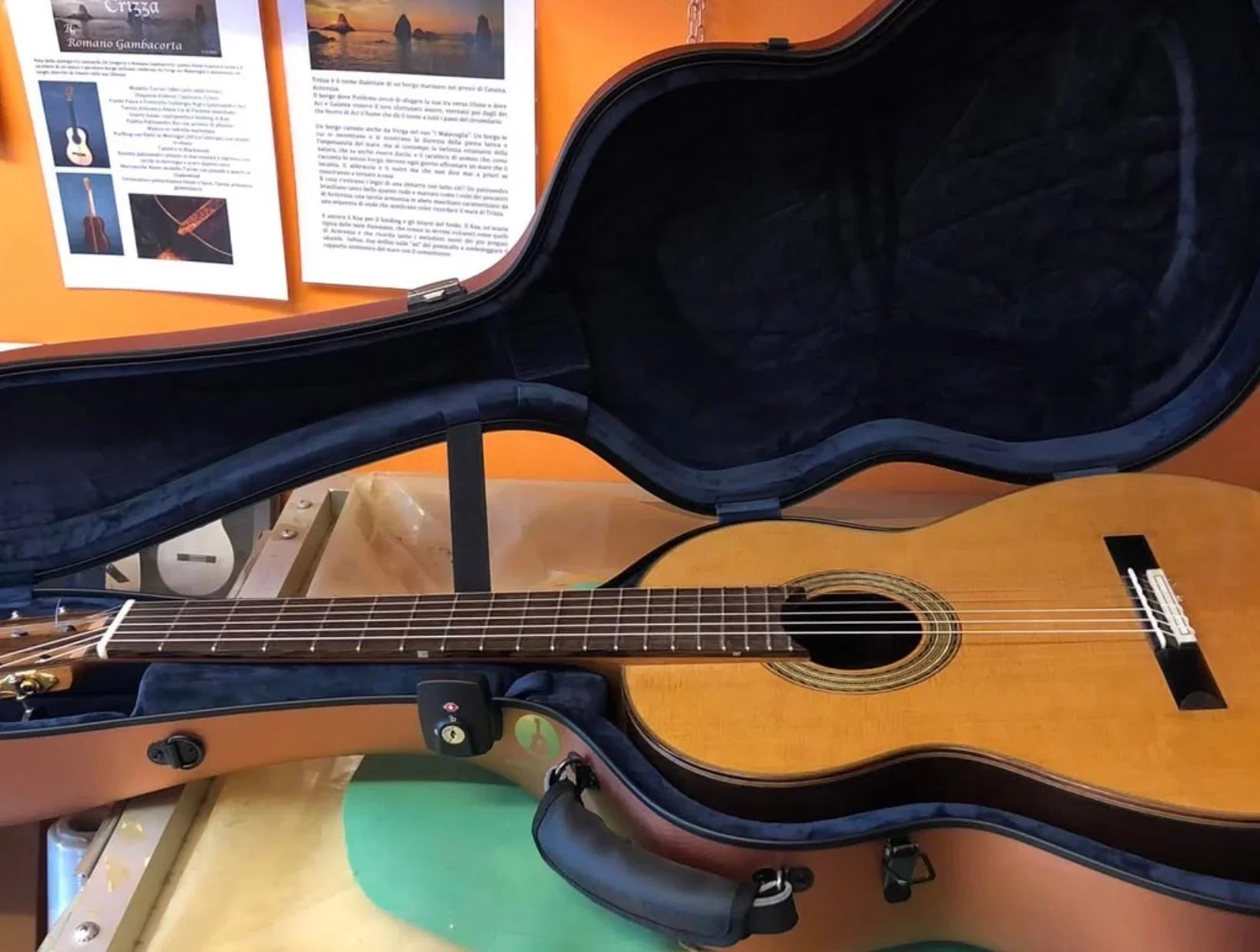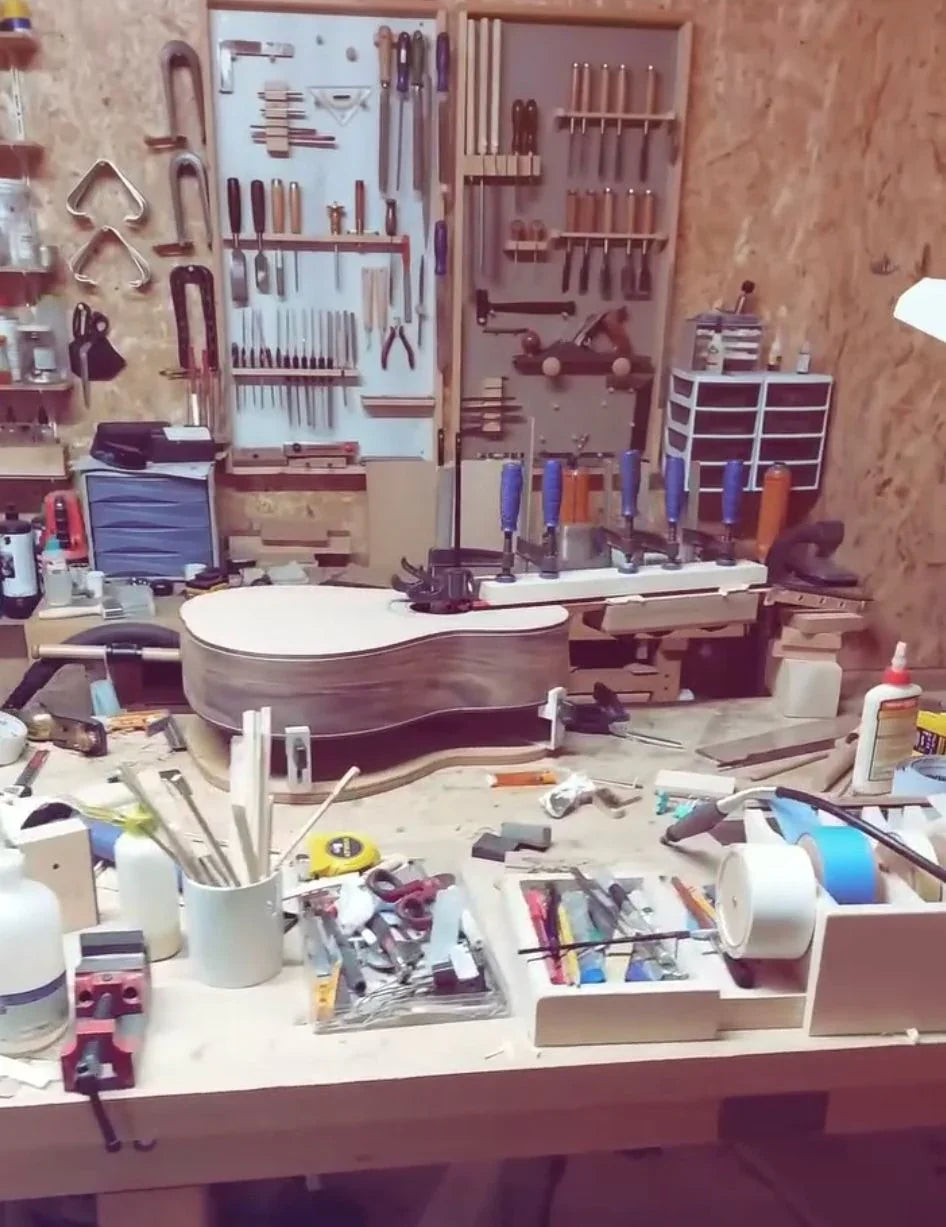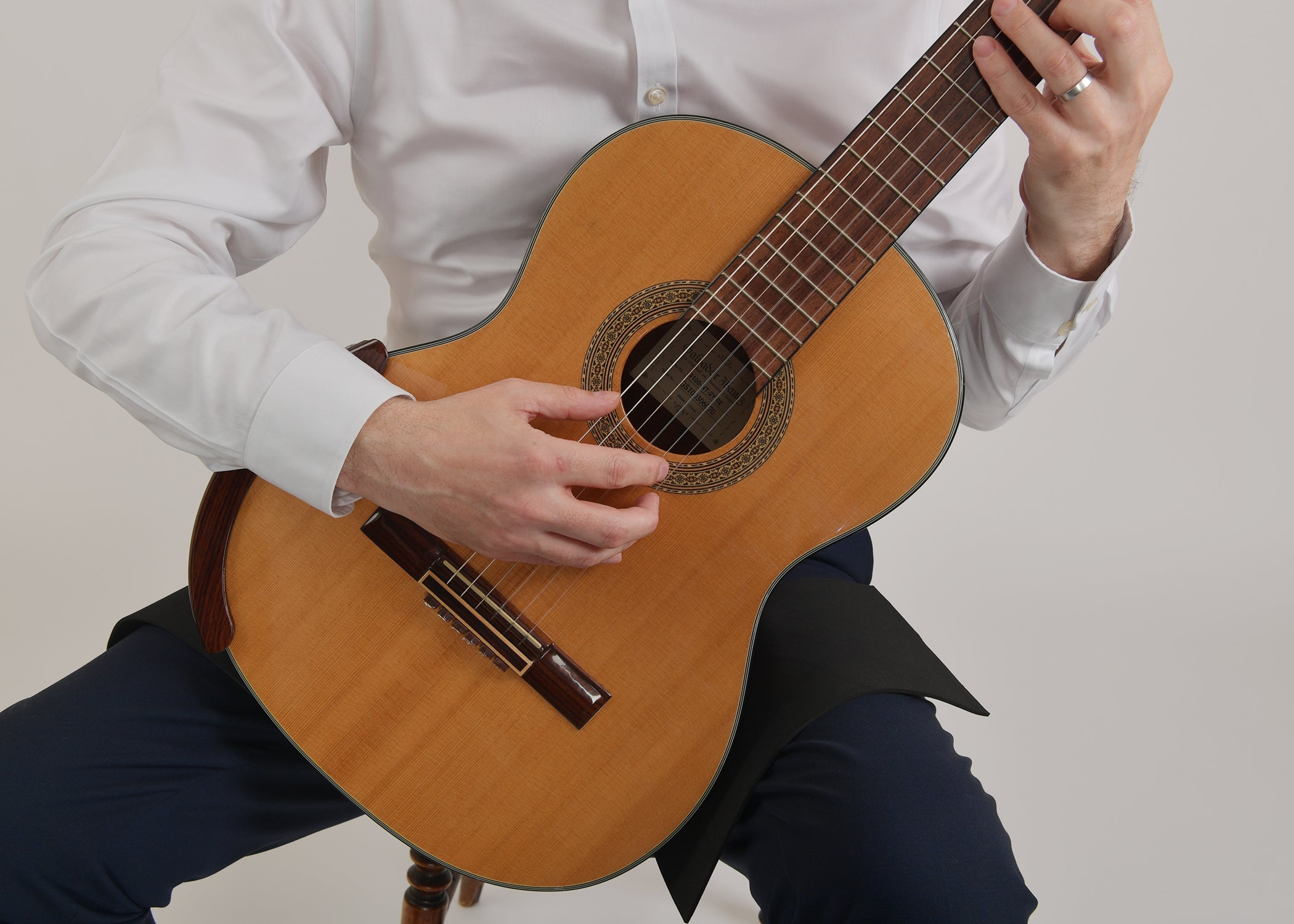At Alba GB, we have the privilege of knowing many wonderful luthiers not just as builders but as friends. One of those friendships we truly value is with Fernando Mazza, a master luthier whose instruments speak with strength, clarity, and musical depth. Over the years, we’ve had many conversations with Fernando at Roma Guitar Expo, where we both go every year, and during long phone calls discussing guitars or guitar-related themes, and every time, we discover something new. Today, we continue that ongoing conversation with a deeper look into Fernando’s craft, his ideas, and the building philosophy behind his exceptional guitars, and we invite you to join that conversation with us.
Alba GB:
Fernando, it’s always a pleasure to speak with you. Each time we talk, I hear something new in the way you think about guitar making. Could you tell us how your professional journey through different traditions has influenced your work, and how those traditions show up in the guitars you build today?
Fernando Mazza: Thank you, it’s always a pleasure for me as well
Every tradition I studied offered something practical that shaped the way I build today. I’ve built traditional guitars and learned a lot from that experience, but I also realized that the guitar I wanted to build had to be different. I have to say that my main inspiration comes from modern constructions, like lattice bracing and double tops. I spent twenty years of my life researching and working to improve the tonal and acoustic performance of guitars reinforced with carbon. It’s essential to understand how the soundboard behaves—how it vibrates, how it moves freely, and how it transfers energy from the strings into the body of the instrument. From the German tradition, I observed a very disciplined approach to internal structure—every brace, every joint, every surface must serve a clear acoustic function, supporting the voice without restricting it. Living and working in Italy refined my sense of proportion—not just visually, but acoustically as well. In Italy, there’s a deep instinct for balance: how shape, thickness, and design details come together to create a natural musicality. I don’t try to copy any specific tradition or the models of the great masters in the history of guitar making. Rather, I use those lessons—and my years of research—to build guitars with a unique personality that are expressive, structurally sound, and comfortable to play. In my view, a good guitar is the result of hundreds of small technical decisions, each made with sound and feel in mind.
Alba GB:
When you choose materials, what are you listening for? Can you share an example of how a particular piece of wood might shape your building decisions?
Fernando Mazza:
Wood is always the first voice of the guitar. I spend a lot of time with each piece—tapping it gently, flexing it, feeling the grain. Spruce can offer many things depending on its growth pattern and density. Some spruce gives a crisp, fast response, which invites thinning the top slightly more to achieve a broader dynamic range. Other pieces require maintaining more stiffness to preserve stability.
Cedar behaves differently—it usually has a softer attack and needs a different bracing to bring out its natural warmth without losing clarity. For example, I recently worked with a very lightweight piece of Red Cedar that reacted so quickly it required an adjustment to the height of the lattice bars to avoid a harsh sound while preserving the bass foundation.
Every piece of wood teaches you something, and you have to be ready to adapt to it instead of forcing a standard model onto it.
Alba GB:
You build both lattice-braced and double-top guitars. How do you decide which structure is right for a particular guitar?
Fernando Mazza:
It depends on the target voice and the player’s needs. Lattice-braced guitars, using balsa reinforced with carbon fiber, provide an extremely responsive top that offers powerful projection with minimal effort. They suit players who need clarity and strength across large spaces. Double-top guitars, built with a balsa wood core between two thin wood layers, allow even more control at very soft dynamics while keeping strength at full volume. When deciding between the two, I think about the kind of phrasing and sound colour the player wants. If a player asks for maximum expressive flexibility across dynamics, the double-top can offer more shading possibilities. If the goal is maximum power and immediate attack, the lattice structure usually fits better.
Alba GB:
Many players who tried your guitars mentioned how comfortable and natural they feel right away. When you design a guitar, what are some of the key elements you focus on to make sure the guitar not only sounds good but feels right in a player’s hands?
Fernando Mazza:
For me, playability is as important as sound. I pay close attention to the neck profile, it needs to feel natural in the hand, not too thin, not too bulky, but traditional. The setup, meaning the string height and tension balance, must allow fluid movement without sacrificing tonal fullness. I also consider small ergonomic features like slightly adjusting the fingerboard angle or fine-tuning the bridge height to optimize string response. Everything from the fretwork to the body contour must work together so that when a guitarist picks up the instrument, it feels familiar, even if it’s their first time playing it. Comfort lets players forget about technique and focus fully on the music.
Alba GB: If someone plays one of your guitars for the first time, what is the best way for them to discover its full sound?
Fernando Mazza:
I always suggest players start by playing quietly. Don’t force the guitar at first — let the top respond naturally. My guitars are built to react to minimal energy, so very small differences in right-hand touch will change the colour, the dynamics, and the projection. By learning how to work with the guitar’s natural movement, the player can unlock a very wide expressive range. Once that relationship forms, the guitar feels almost limitless in its possibilities. I design them to make that discovery process as rewarding as possible.
Alba GB:
Before we close today’s conversation, is there anything exciting you’re working on now that you can share?
Fernando Mazza:
Every guitar I build teaches me something. Lately, I’ve been studying how different techniques on the back and sides can subtly adjust the warmth and openness of the overall sound without compromising projection. It’s a very delicate area, but those small acoustic shifts become quite important once you hear them in performance.
I’m also working on incorporating tubular carbon reinforcements inside the neck and redesigning the bridge, integrating carbon in specific zones that, in my view, are critical for sound development. I’m finishing a few guitars right now that reflect these ideas more clearly, and I’m very curious to hear what the musicians will think. Maybe that’s something we can talk about in our next conversation.
Alba GB:
We would love that. Thank you again, Fernando. It’s always a real pleasure to talk with you, these conversations remind us why building and playing guitars is such a passionate, human art.
Fernando Mazza:
Thank you. Talking with you always feels like continuing a great conversation we started long ago. I’m looking forward to the next one.
Alba GB:
Yes, and for our next conversation, I’ve prepared even more exciting questions. We look forward to seeing you all in Part 2!





Leave a comment
This site is protected by hCaptcha and the hCaptcha Privacy Policy and Terms of Service apply.